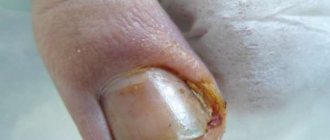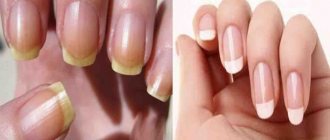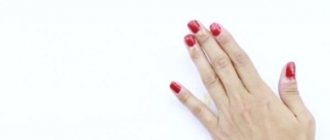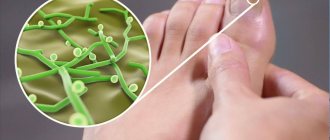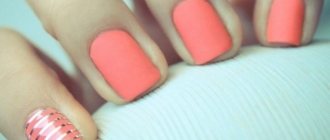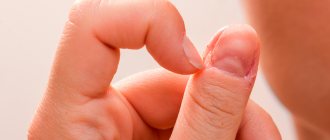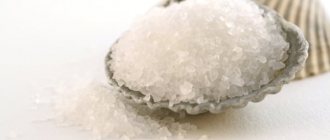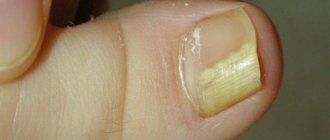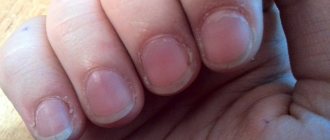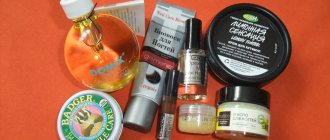Dense neoplasms appear on the hands of people engaged in monotonous physical labor. Due to constant friction and pressure on certain areas, the skin becomes rougher, gradually growing into a callus .
Photo 1. Calluses on the hands, as well as on the feet, appear due to prolonged friction and improper load distribution. Source: Flickr (zero one).
Causes of calluses on hands
In essence, a callus is injured skin, indicating excessive stress on a certain area. Among the main factors that provoke the formation of compactions are the following:
- Reduced immunity and vitamin deficiency . Lack of vitamins A and E affects the moisture content of the epidermis. As a result of a lack of nutrients, the skin dries out and becomes sensitive to external factors;
- Increased loads . Often, when lifting weights, monotonous work with garden tools, regular exercise on horizontal bars, bubbles filled with liquid appear on the inner surface of the palms and fingers, hardening over time and transforming into dense new formations;
- Costs of the profession . The monotonous performance of professional duties (for example, seamstresses, programmers, carpenters, packers, carpenters, etc.) contributes to friction between tools and skin. The location of the callus is closely related to the profession;
- Hormonal imbalances . As a result of failures in the normal functioning of the endocrine system, the epidermis becomes sensitive, so the skin easily bursts and is injured;
- Exposure to third party chemicals . Regularly interacting with preparations containing soda, the skin becomes dry and susceptible to the formation of rough cracks, due to which the epidermis becomes dense;
- A sharp change in living conditions . The formation of calluses is promoted by regular visits to the sauna or work associated with temperature changes (hot shop, freezer, etc.).
Preventive measures
Sometimes it will take a long period of time for the skin to heal, so it is best to prevent the appearance of such growths. Following these recommendations will help avoid such problems:
- It is necessary to protect the skin of your hands from mechanical stress and avoid friction. To do this, any heavy work should be done with cotton gloves.
- When playing sports, for example, on the horizontal bar, it is recommended to use special leather mitts.
- After hard work or work in the country, you need to lubricate your hands with a softening cream.
- Before doing dirty work, you need to apply a special protective agent to the skin, which creates a film that does not allow dust and dirt to be absorbed into the dermis.
- You should regularly take baths with sea salt and medicinal herbs that soften the skin.
- It is not recommended to carry bulky and heavy purchases in bags with thin handles that dig into the skin of your hands.
Following simple rules will help you avoid such troubles as calluses. Constantly caring for the skin of your hands and removing rough areas will help prevent the appearance of core growths.
Types of calluses
Calluses on the hands are divided into three types:
- Soft watery . It is a bubble of thin skin filled with watery liquid. Sometimes blood is added to the lymph, which indicates damage to the thin capillaries. Popularly, such a formation is called a “bubble” or “dropsy”;
- Hard dry . An untreated or poorly healing watery lump may harden over time. The structure becomes dense and slightly lumpy. Dry callus also occurs as a result of constant mechanical external influence. If you ignore the treatment of a dry formation, it can grow deep into the skin;
- Ingrown dry (with a rod). It is difficult to treat due to the presence of a root deeply embedded in the body. The rod can cause pain by touching nerve endings.
Description of calluses
There are several types of calluses that are treated in different ways. Some formations are especially difficult to deal with. Types of calluses:
- Dry calluses appear due to prolonged low-intensity friction. This is a protective reaction of the skin that strives to prevent injury and damage. It is much more difficult to treat them when they are wet;
- Dropsy or wet calluses . Appear under strong and intense mechanical friction. A clear liquid begins to form under the skin, and later the callus ruptures or resolves. Hypertension and swelling is the first sign of a wet callus.
- Rod . The neoplasm has a root that goes deep into the epidermis. A deep damage is formed, which requires removal of not only the surface part, but also the root.
Single calluses should be carefully examined, as they are often confused with warts. Then all medications and folk remedies will be ineffective. Only a dermatologist can remove a wart.
Localization
The location of the callus often indicates the specificity of a certain area of activity.
Calluses on fingers
Fingertips and joints are easily susceptible to mechanical damage among students, writers, secretaries, hairdressers, turners and representatives of other professions whose activities involve monotonous performance of the same type of operations .
The most common reason for the appearance of hard formations on the fingers directly depends on the performance of mechanical work of the same type. A person may not notice slight pressure on the skin, and only over time does the disease make itself felt. Seals can be located on:
- Joints and bends. Such skin damage occurs in women who often carry heavy bags, and athletes who work with hardware without gloves;
- Pads. Mostly people who work in jewelry, packaging, or work closely with a computer keyboard suffer;
- Index finger. The internal phalanx experiences friction when working with a tool, including a ballpoint pen. Occurs among schoolchildren, students, professors, employees of service centers, etc.;
- Middle finger. The most common affected area. Calluses appear as a result of friction during seasonal work in the garden or playing sports.
Photo 2. Using gloves will protect the delicate skin of your hands. Source: Flickr (pocolover1957)
On the knuckles
Often occur after carrying heavy loads or bags . Knuckles are also subject to increased friction in athletes who exercise on iron sports equipment.
On the palm
An occupational disease for farmers, athletes, loaders and other people whose work involves regular pressure from a tool on the palm.
Treatment of dry calluses, preventive measures
If there is a dry callus on the finger without a core, it is quite easy to remove it at home, even with the help of remedies from the arsenal of traditional medicine. If there is a rod, we recommend that you consult a specialist: a doctor or a beauty salon. In both options, you can start by using pharmaceutical drugs or home recipes yourself:
- Buy 10% salicylic ointment, which contains benzoic acid. Apply several times a day.
- We apply a special patch to the steamed and dried areas, remove it after 2 days and replace it with a new one. And so on until complete elimination.
- Warm up a piece of coniferous resin (popularly called resin) and knead it in your hand, apply it to the callus and secure it with a band-aid.
- Prepare a mixture of crushed raw potatoes and onions (1:1). Apply and wrap with adhesive tape. Leave it overnight. In the morning, remove the bandage, remove roughness with a pumice stone or file, apply a rich cream or oil.
- Instead of a mixture of onions and potatoes, you can use aloe pulp.
- Take a piece of defrosted meat and apply it for 2-3 hours. You can repeat the procedure up to 5 times.
- Add a tablespoon of shampoo and a teaspoon of baking soda to a liter of boiled warm water and soak the hands for 20 minutes. After this, you need to wipe them and try to remove the callus. Apply nourishing cream. The product helps with different stages.
Each time after removing the mask, you should carefully try to remove the roughness. There is no need to use force. Apply rich cream or a little lard, repeat the compress if necessary or choose a different recipe.
In order not to have to think about treatment and relief, and experience unpleasant sensations, it is better, of course, to avoid this problem:
- For complex physical work, purchase special mittens or gloves made of soft, thick fabric.
- If the work involves contact with water, buy rubber gloves. They should be thick and long.
- If the work is monotonous, you need to buy a patch. A piece of it can be used to protect the site of permanent exposure. There are soft corrugated patches specifically for this purpose, they are flesh-colored. This advice will be useful for manicurists and packers.
- We recommend that athletes wear special gloves. And don’t forget to use talcum powder to reduce friction.
Girls, take care of your hands. Do not carry heavy bags, take proper care of your skin as often as possible, constantly moisturize and nourish it. During a manicure, do not neglect baths.
Let the calluses on your fingers appear solely because of diamond rings.
How to get rid of calluses on your hands
Calluses on the hands can be easily treated at home. The main thing is to repeat the procedures daily until the symptoms are completely eliminated.
Important! Under no circumstances should you puncture a watery callus. This will significantly delay the healing process and may cause infection.
Medications
Calluses can be easily treated with medications:
- Ferizol . Sold without a prescription. Use very carefully as the product is quite aggressive. Apply to the affected area with a cotton swab. Contact with healthy tissue is not advisable;
- Salicylic ointment . The acid has a beneficial effect on hardening, softening the skin to the point where it can be removed with pumice;
- Antimozolin . The drug is gentle. Non-aggressive, gentle on dry seals;
- Cryopreparations . The active ingredients in the ointment freeze hard cells, causing calluses to fall off within a few days. The most popular of Cryopharm creams.
Baths for calluses on hands
Before removing dead skin particles with pumice, it is advisable to steam your hands . You can add soap shavings, sea salt or oat straw to warm bath water.
Procedure time: 20-30 minutes. When finished, remove the softened tissue with a pumice stone or brush. Do not use sharp tools under any circumstances . Be sure to lubricate your hands with moisturizer.
Folk remedies
People have long noticed that the rough layers of skin on their hands disappear after treatment with certain plants and products:
- Celandine . Lubricate the dense formation with fresh grass juice or a pharmaceutical product of the same name;
- Garlic . Place the peeled slices in the oven and leave for 20-30 minutes. Grind the baked garlic into a paste and add 30 g of butter to it. Apply at night;
- Onion . All you need is onion skins. Fill any container with it and add table vinegar. Leave for 14 days, after which you need to drain the excess liquid. Apply the wet peel overnight;
- Lemon . After taking a warm bath with salt or soda, apply a lemon slice to the seal.
Removal in clinical settings
It makes sense to contact the clinic if standard remedies have not helped or the callus deep root . In a hospital setting, they will help you get rid of hard formations in one session.
Hardware drilling
A simple procedure in which the doctor drills out the rod and all the rough skin. To prevent repeated relapses, you should visit the hospital a few days later, when the wound has already healed, to ensure a positive result. Remnants of the callus may grow again.
Laser removal
Using a laser, a specialized specialist burns the affected area of skin . This is the simplest and most painless procedure . Infection does not occur because the neodymium laser disinfects the wound.
Cryodestruction
The rough area of skin is frozen using liquid nitrogen. After a few days, the formation disappears on its own .
There are practically no traces left.
Treatment of watery calluses
Do not delay treatment. Firstly, such a manifestation tends to worsen, grow, and take root. Secondly, a woman’s hands should be well-groomed, soft and smooth, very beautiful and gentle. This picture doesn't fit with a callus, does it?
The most dangerous thing is a wet, watery callus. Here's how you can deal with it:
- Every pharmacy sells a remedy for the treatment of this type of formation. Usually this is a special impregnated plaster.
- There is no point in treating a wet callus with creams; it needs to be dried. Therefore, apply iodine or alcohol to the problem area, including the space around the painful area. Repeat the procedure every hour.
- If the callus has burst, you need to treat the area with iodine, or better yet, with an antibiotic, and apply a band-aid.
- If it is not possible to buy a special bactericidal absorbent patch with a soft insert, apply a regular inexpensive patch. If it is not paper-based, then it is better to first apply a piece of natural fabric or bandage soaked in alcohol to the wound, and glue a strip on top of the burst blister.
- You can get rid of calluses with the help of medicinal plants. Grind Kalanchoe or aloe, bandage the pulp. The dressing is changed 2 times a day; when changing, treat the area with an antiseptic. After a few days of this treatment, the problem will go away.
- Grind plantain leaves and bandage for several hours. We do it 4 times a day. If the leaves are dry, steam them in hot water (to a pulp).
- The eggshell film will help protect and dry the skin. Take it out of the raw egg, apply it with the wet side and let it dry.
Never puncture a blister . Even if you plan to use an antiseptic, the risk of getting an abscess is still very high. Therefore, one of the aspects of treatment is to protect the callus from any mechanical damage, it is necessary to remove the formation factor, and constantly use drying and antiseptic drugs for 2-3 days until the blister dries.
If the blister has burst or there is a need to puncture it because it is very large, make a puncture on the side with a sterile instrument, apply a sterile cloth to absorb the liquid, apply an antibiotic or a special composition and apply a band-aid. Do not remove the exfoliated skin; it will serve as nature’s most reliable dressing, a barrier that will not let bacteria through.
If you allow infection, then after 1-2 days pus will begin to accumulate in the affected area, and your temperature will rise. In this case, be sure to consult a doctor.
Treatment for other types of calluses is fundamentally different.
Treatment
Methods for getting rid of calluses are selected based on the type of tumor. To quickly heal and soften keratinized skin, pharmaceutical preparations and special patches are used. Old and core growths are removed using professional methods in a beauty salon or doctor's office.
Pharmacy medicines
A small blister that has not burst does not require close attention. It needs to be disinfected and sealed with a bactericidal plaster.
If re-injury is avoided, recovery occurs in 3-4 days.
Bursted calluses should be treated with an antiseptic and lubricated with an antibacterial agent. The following have good healing properties:
- Ichthyol ointment;
- Tetracycline ointment;
- Levomekol;
- Syntomycin ointment.
They should be applied under a sterile dressing twice a day until the wound stops weeping and heals.
Calluses that have a dry structure can be removed with keratolytic preparations. These are substances that dissolve the stratum corneum. Before use, you need to hold your hands in a warm bath of soda and salt and clean the roughness with a scraper.
To cure growths, the following are prescribed:
- Salicylic ointment;
- cream Nemozol;
- Super Antimozolin.
The skin around the callus must first be lubricated with zinc paste, which protects healthy areas from irritation in the event of contact with an aggressive agent.
Apply keratolytic ointment, cover with gauze and seal with adhesive tape for a day. To completely eliminate the problem, you need to repeat the procedure for 3-5 days.
Old growths and calluses with a small root can be removed with special liquids that burn out the formation. They need to be applied pointwise using an applicator. Popular substances are:
First, you need to steam your hands. Pour a drop of product onto the callus and wait until it dries. Repeat the manipulation 2-3 times. It causes the dead layer to peel off and gets rid of dry formations.
Plasters
You can cure calluses on your hands caused by a sports horizontal bar or digging up your summer cottage with a shovel using special plasters.
To prevent the remedy from worsening the situation, you need to choose it correctly. There are plasters for weeping wounds and dry calluses.
- To get rid of bubbles, you should purchase products made using hydrocolloid technology. They prevent the development of infection, maintain a moist environment, and relieve pain. In pharmacies you can buy products from Compid and S. The tape is tightly glued to the disinfected wound. Change the patch daily until the callus heals.
- To remove hard growths, keratolytic patches are used. Their inner side contains salicylic acid and other ingredients that help soften the epidermis. Salipod enjoys well-deserved popularity. It dissolves keratinization and promotes the formation of healthy cells. Salipod is applied after preliminary steaming of the sore spot. The patch needs to be changed every 2 days.
To get rid of dry calluses, you can use a Corn adhesive plaster, products from Urgo and Compid.
Professional methods
Deep growths with roots that appear on the hands are difficult to remove. To get rid of them, radical methods are needed. To use them, you should consult your doctor. Modern medicine offers:
- Cryodestruction. The procedure is carried out with liquid nitrogen. The substance freezes the skin and causes the death of pathological tissues. A bubble forms at the site of the growth, under which healing occurs. After recovery, the callus completely disappears from the hand.
- Drilling. The manipulation is done with a special device in a cosmetology office. They use different nozzles. First, the stratum corneum is removed, then the rod is drilled. The recess left from the treatment is treated with an antiseptic and antibacterial ointment.
- Laser. The neodymium beam burns out the root and callus, while simultaneously disinfecting nearby tissue. The procedure is not painful and is well tolerated by patients. The location of the callus must be regularly treated with an antimicrobial drug until healing.
Using the above methods, you can cleanse your hands of hard and core calluses in one session. The risk of relapse is minimized.
Core callus: structure
On the outside, such a callus is a keratinized tubercle of the epidermis, which has a round shape. In the middle of the stratum corneum there is a hole in which the plug is located. The cork covers a rod that penetrates deep into the epidermis.
The deep root is the biggest problem when removing a callus lesion, since in advanced cases the rod can penetrate not only the skin layer, but also the subcutaneous tissue.
When a callus develops in children, it can only be removed by professionals in a clinic or beauty salon. A callus that appears in an adult in the early stages can be eliminated after softening the stratum corneum with the help of medicinal ointments and folk recipes. It is worth considering that after removing the plug, you need to completely remove the root and process the hole.
Types of calluses
Probably every person in life has encountered such annoying troubles in the form of calluses. Few people have ever thought that calluses, like all skin diseases, must be treated and the sooner the better.
By their nature, these growths are a protective reaction of the skin to constant aggressive external influences. A large number of calluses form in areas of constant compression, squeezing or friction, including the feet, soles, fingers and toes. Fingers and palms are most often affected by drivers and people accustomed to active physical labor. And the toes suffer in young girls who carefully follow fashion and love to pamper themselves with brand new shoes.
In any case, no matter where and for what reason they form, they must be dealt with. Calluses can be of two types: dry and wet. Wet ones can also have such a subtype as bloody ones. Most often, the reason for their appearance is almost always the same; it all depends on the strength of the impact on a certain area of the skin.
source
Traditional methods of treatment
Traditional treatment methods involve the use of various herbs. In first place is the herb celandine, its juice has a bright orange color, it is often used to reduce warts. The juice of only the plucked plant is used, the callus is smeared with juice and sealed with a band-aid, the procedure itself is carried out for about four days, depending on the size. Another plant for the treatment of calluses is garlic; it is enough to grind one clove to a paste and apply it to the skin overnight. Before doing this, it is better to steam the area of skin with a callus. After two nights it will be easier to get rid of it.
Callus can be treated with propolis solution, which treats almost any skin-related disease. Propolis in the form of a solution is applied to the skin and fixed with a bandage or plaster for five days. After a while it will completely disappear. Treatment is also carried out with various baths; they effectively help fight the disease. For example, a bath with baking soda and laundry soap affects the root and helps remove it. Hot water baths combined with mustard powder also promote quick treatment. This type of treatment involves drying the affected skin and removing the root. Good remedies are a combination of oils and iodine applied to the skin for a short period of time.
How to remove a callus from a pen?
Growths from constant writing can appear in both an adult and a child. You need to get rid of it in several stages, actions should be aimed at softening the skin.
- Steam the callus using special baths (with chamomile, calendula or sea salt).
- Gently exfoliate dead skin with a pumice stone.
- Rub in a mixture of vegetable oil (peach, castor, olive, avocado) and 2-3 drops of essential oil (lavender, chamomile, tea tree).
- In addition, during your free time from work or study, you can speed up the healing process by applying agave extract to your finger.
- To avoid the appearance of a growth on your index finger, you can change the pen to a more comfortable one with a rubber tip or change the way you hold it when writing.
Prevention
In order not to torment yourself once again with the question of how to get rid of calluses on your hands, it is better to prevent their formation. To do this, you should not neglect the use of gloves when doing manual work or carrying heavy loads, avoid prolonged pressure on your palms and fingers, and regularly care for your hands using pumice stone and nourishing cream.
Only timely prevention will help avoid the appearance of calluses on the hands and subsequent long-term treatment, which not only hits the pocketbook, but is also very exhausting.
Calluses on the hands are an aesthetic defect that manifests itself as a result of mechanical impact on certain places. This is the body's way of protecting itself as it regenerates a thicker layer of skin. Sometimes such compaction is accompanied by pain and can become an extremely unpleasant problem.
If calluses appear, you need to know how to properly remove them from your fingers. However, you should not hope that they will disappear on their own the next day. Getting rid of unwanted lumps on your finger is much more difficult than preventing them.
Shipitsa
A spike on a finger is not a dry callus, but a wart
Another article on the topic: How to remove a callus from a pen quickly and permanently The appearance of a callus resembles a dry callus, but in fact it is not one. Representing an infectious neoplasm, it can form not only on the legs, but also on the arms.
Occurs when the human body is infected with the papilloma virus.
Important! This sore on the finger, similar to a callus, is contagious!
In the first stage, the spine is a seal on the finger, similar to a callus, slightly raised above the skin. Subsequently it becomes larger and is surrounded by small growths.
The roots of the spine run deep, which causes severe pain when touched.
Treatment for the spine is strictly selected by a specialist. He will determine whether drug intervention or traditional methods will be optimal in this case.
IMPORTANT! If you suspect a spine, you should contact a dermatologist who will make an accurate diagnosis. If necessary, you will need to take tests to detect the papilloma virus.
Wet callus
This is an area of skin on which a small skin bubble has formed, filled with lymphatic fluid inside. It should be noted that the main cause of wet calluses is strong mechanical friction over a long period of time. If the friction was too strong and regular, then the wet callus may become bloody - due to damage to the capillaries, it will be filled not only with lymphatic fluid, but even with blood (in this case, you should not delay visiting a specialist so as not to harm your health).
Causes of calluses formation
There are several groups that absorb various factors for the occurrence of calluses on the hands. Depending on the cause, a callus may appear on the finger, calluses on the elbows or on the bends of the hands.
The most popular factors leading to the formation of skin seals:
- Physical activity (it is during prolonged and intense exercise that dropsy or dry calluses appear on the hands. This category includes sports or physical labor on a construction site or in the garden).
- Occurrences in connection with the type of activity. Depending on a particular type of activity, a person may receive such a “bonus”: musicians may develop calluses on their fingertips from playing guitar, and office workers may develop growths on their elbows from constant contact with a hard surface.
- Lack of vitamins E and A-group. A lack of vitamins in the human body can lead to serious disorders and failures of various organ systems.
Lack of vitamin E affects skin quality
